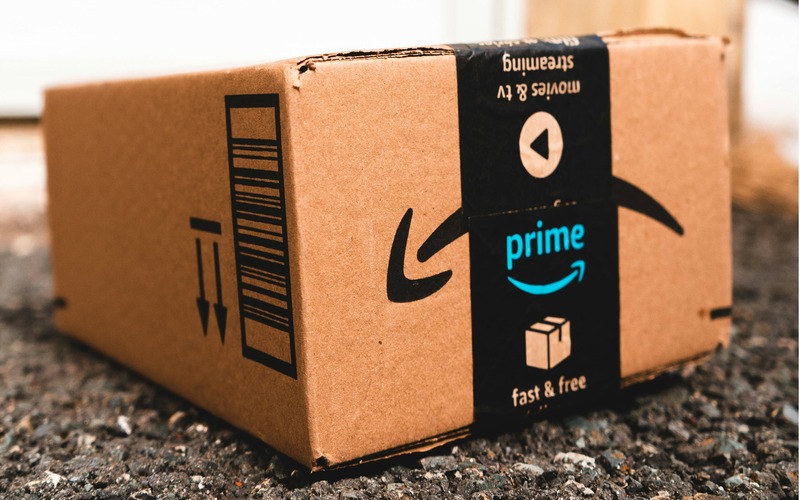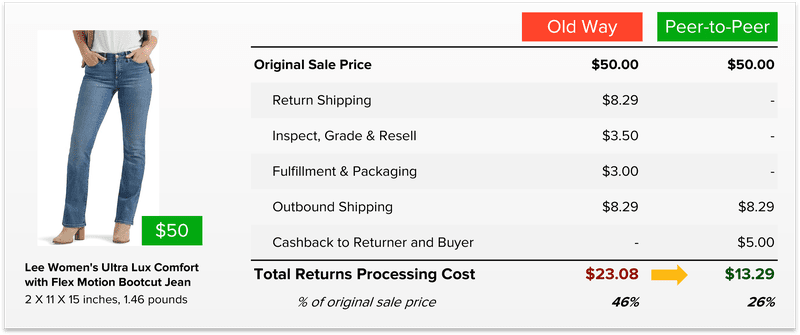Amazon’s “Frequently Returned” Item Badge: What Sellers Need to Know

Last updated on February 4, 2025

Amazon regularly experiments with new tools and features to enhance the shopping experience on its webstore. For example, the Climate Pledge Friendly program allows Sellers to list a product’s sustainability certifications that help customers quickly and easily identify eco-friendly products. Another example is Amazon’s “Frequently Returned Item” badge, a feature that has sparked both concern and opportunity for Sellers. By highlighting products with higher return rates than similar products in the category, Amazon aims to improve customer satisfaction and lower the cost of e-commerce operations by reducing ecommerce return rates. But what does this badge mean for Sellers, and what do they need to know to navigate its implications effectively?
The Purpose and Mechanics of the Badge
Amazon’s Frequently Returned Item badge is a transparent signal for customers, suggesting they carefully review product details and previous customer feedback before purchasing. It is applied at the ASIN level so as not to impact product variants such as colors or sizes. It is triggered when a product’s return rate exceeds a predefined threshold relative to similar items within its category.
The return rate is calculated by comparing the number of units shipped to the number of customer-initiated returns over the trailing 3 months. Categories with inherently low return rates, such as groceries, are susceptible to changes in return rates, while categories like apparel, where returns are more common, have higher allowances. This system ensures that products are judged fairly within the context of their market norms, and suggested return rates are updated “periodically” to reflect new market conditions.
The Impact of the Badge
The display of this badge on a product listing could profoundly impact sales and, thus, revenue. Sellers tell stories in the Amazon Forums about conversion rates dropping as cautious buyers opt for alternatives without warning. Lower sales lead to even further declining sales as lower search rankings further deprioritize items associated with negative customer experiences. Sometimes, Sellers are adversely affected through no fault of the product or the listing.
For example, e-commerce return rates can fluctuate due to seasonal trends, particularly during the peak holiday season. High volumes of gift purchases typically lead to increased returns in the following months. Still, Amazon’s suggested returns rates are not adequately adjusted to compensate for the changes in buyer behavior.
Beyond immediate sales, the badge can erode customer trust in the Seller’s brand. A frequently returned product may signal poor quality and/or misleading or inaccurate product descriptions so that buyers would be more wary of that item. Over time, this perception can damage the Seller’s reputation, making it harder to build lasting customer relationships. It’s worse if the business has a small product catalog and worse yet if the small SKU catalog is closely related. Some retailers have reported going from selling well one day to nearly out of business the next, highlighting the need for Sellers to regularly and actively monitor return rates at the ASIN level.
Amazon’s Voice of the Customer dashboard offers valuable insights. It includes 3-month (short-term) and 12-month (long-term) return rate data, category-specific thresholds, and the Top Negative Customer Experience (NCX) reason. This report allows sellers to identify problematic products early and take corrective action.
When a product does “earn” the badge, it’s not permanent. Amazon continuously tracks return rates, and the badge is automatically removed once the rate falls below the threshold. Some Sellers have reported that sustained improvement alone (without staying beneath the exact target return rate) prompted the removal of the badge.
Strategies for Reducing Return Rates
Retailers cannot rely on hope, as in the last example. Crafting the perfect ecommerce returns program and following the key steps below can help them avoid the naughty list and prevent the dreaded Frequently Returned Item badge:
- Enhance Product Descriptions: Clear, correct, and detailed product information is crucial. Misleading or incomplete descriptions are among the top reasons for returns. High-quality and high-resolution images from multiple angles help set realistic expectations. Sellers should ensure their listings include precise dimensions, accurate features, color representations, and specifications. Providing thorough size charts and usage instructions can also reduce the likelihood of returns.
- Improve Quality Control: Product quality plays a significant role in customer satisfaction. Sellers should work closely with suppliers to implement rigorous quality assurance protocols to minimize manufacturing defects. Investing in durable packaging can help prevent issues like damage during shipping. Fixing common product problems or complaints at the source can also lead to lower return rates.
- Foster Customer Communication: Engaging with customers proactively can prevent many potential returns. This includes responding promptly to questions, offering detailed instructions about product use and care, and addressing any limitations upfront.
- Strengthen Customer Support: Excellent customer service can result in opportunities to prevent returns. By encouraging customers to seek assistance before initiating a return and addressing their concerns quickly and effectively, Sellers can preserve the sale and minimize the impact on the return rate.
Turning Challenges into Opportunities
The Frequently Returned Item badge is not merely a penalty; it’s also a valuable feedback mechanism. Sellers who view it as an opportunity to improve their product design can emerge stronger and more competitive. By addressing the underlying issues that lead to high return rates, Sellers can enhance customer satisfaction, reduce operational costs, and build a reputation for quality and reliability. Of course, that’s a forward-looking and optimistic statement…when a Seller is in the thick of it, and sales are tanking, it’s hard to look at things optimistically.
Summary
Amazon’s introduction of the Frequently Returned Item badge reflects its ongoing commitment to its customers. Sellers who understand and take a proactive approach to return rate management will be able to navigate the rules and prevent the Negative Customer Experiences Amazon is looking to avoid.
By prioritizing product quality, transparency, and customer engagement, Sellers can avoid the badge and strengthen their position in the hyper-competitive marketplace. As reverse logistics costs are reduced, margins will also improve. The improvement journey may require effort and investment, but the rewards (or, more accurately, the lack of penalties) make it worthwhile.

Up to 64% Lower Returns Processing Cost


 6 minutes
6 minutes